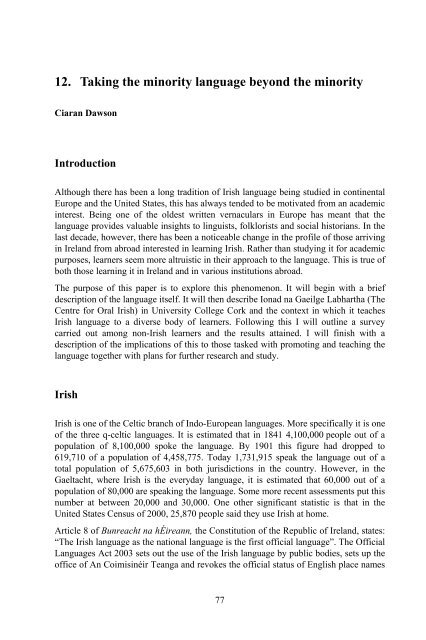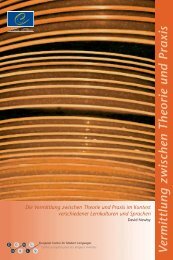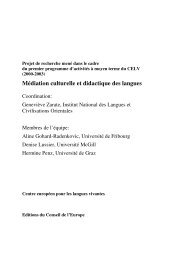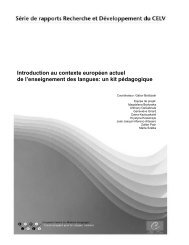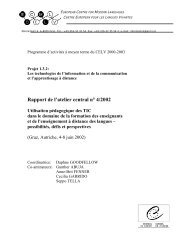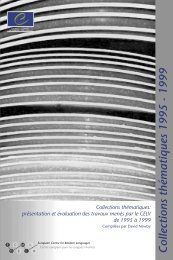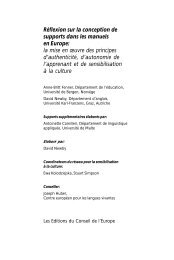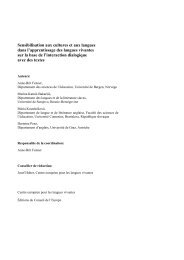cohesion - European Centre for Modern Languages
cohesion - European Centre for Modern Languages
cohesion - European Centre for Modern Languages
You also want an ePaper? Increase the reach of your titles
YUMPU automatically turns print PDFs into web optimized ePapers that Google loves.
12. Taking the minority language beyond the minority<br />
Ciaran Dawson<br />
Introduction<br />
Although there has been a long tradition of Irish language being studied in continental<br />
Europe and the United States, this has always tended to be motivated from an academic<br />
interest. Being one of the oldest written vernaculars in Europe has meant that the<br />
language provides valuable insights to linguists, folklorists and social historians. In the<br />
last decade, however, there has been a noticeable change in the profile of those arriving<br />
in Ireland from abroad interested in learning Irish. Rather than studying it <strong>for</strong> academic<br />
purposes, learners seem more altruistic in their approach to the language. This is true of<br />
both those learning it in Ireland and in various institutions abroad.<br />
The purpose of this paper is to explore this phenomenon. It will begin with a brief<br />
description of the language itself. It will then describe Ionad na Gaeilge Labhartha (The<br />
<strong>Centre</strong> <strong>for</strong> Oral Irish) in University College Cork and the context in which it teaches<br />
Irish language to a diverse body of learners. Following this I will outline a survey<br />
carried out among non-Irish learners and the results attained. I will finish with a<br />
description of the implications of this to those tasked with promoting and teaching the<br />
language together with plans <strong>for</strong> further research and study.<br />
Irish<br />
Irish is one of the Celtic branch of Indo-<strong>European</strong> languages. More specifically it is one<br />
of the three q-celtic languages. It is estimated that in 1841 4,100,000 people out of a<br />
population of 8,100,000 spoke the language. By 1901 this figure had dropped to<br />
619,710 of a population of 4,458,775. Today 1,731,915 speak the language out of a<br />
total population of 5,675,603 in both jurisdictions in the country. However, in the<br />
Gaeltacht, where Irish is the everyday language, it is estimated that 60,000 out of a<br />
population of 80,000 are speaking the language. Some more recent assessments put this<br />
number at between 20,000 and 30,000. One other significant statistic is that in the<br />
United States Census of 2000, 25,870 people said they use Irish at home.<br />
Article 8 of Bunreacht na hÉireann, the Constitution of the Republic of Ireland, states:<br />
“The Irish language as the national language is the first official language”. The Official<br />
<strong>Languages</strong> Act 2003 sets out the use of the Irish language by public bodies, sets up the<br />
office of An Coimisinéir Teanga and revokes the official status of English place names<br />
77


